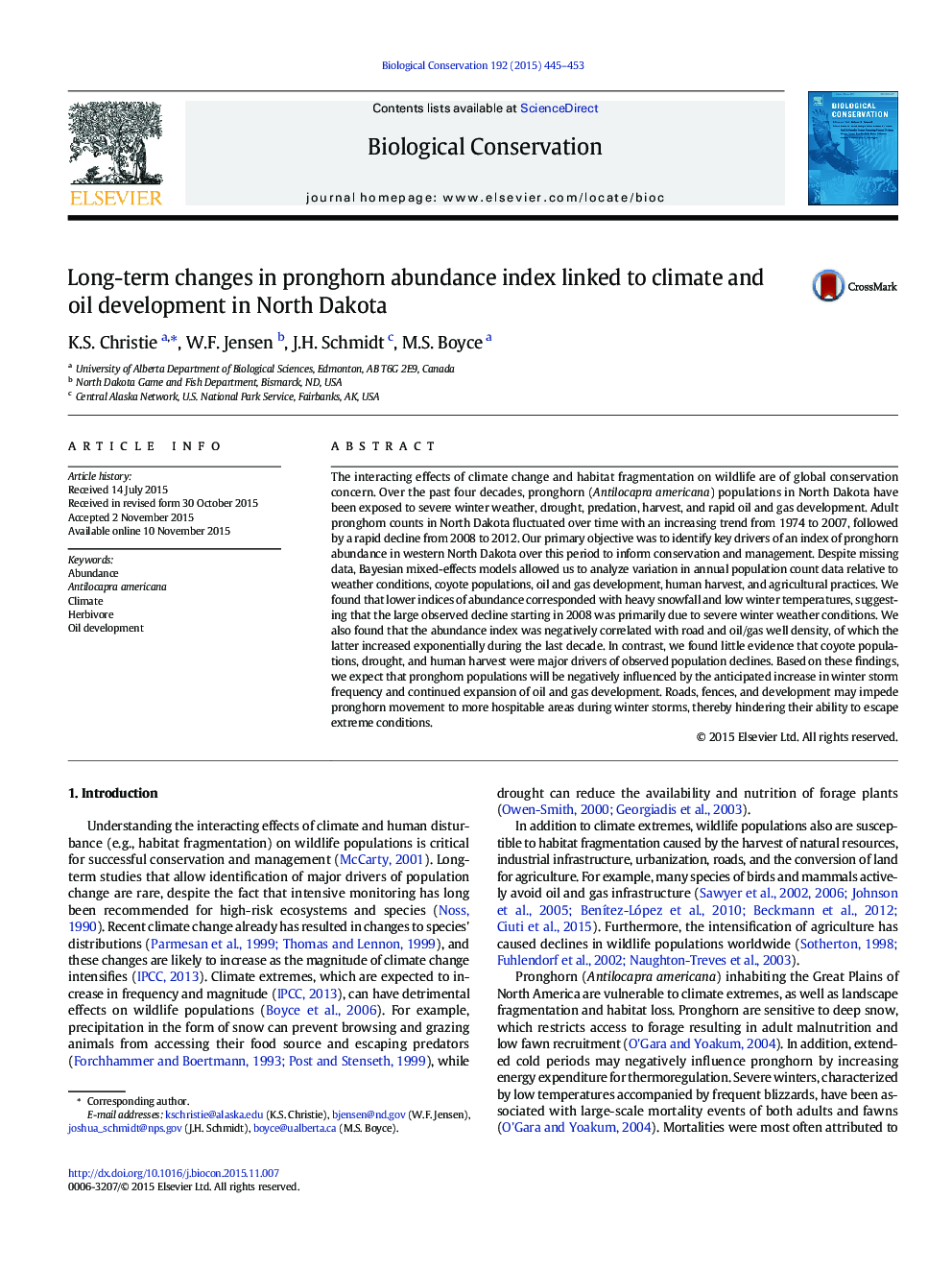| کد مقاله | کد نشریه | سال انتشار | مقاله انگلیسی | نسخه تمام متن |
|---|---|---|---|---|
| 6298628 | 1617909 | 2015 | 9 صفحه PDF | دانلود رایگان |
عنوان انگلیسی مقاله ISI
Long-term changes in pronghorn abundance index linked to climate and oil development in North Dakota
دانلود مقاله + سفارش ترجمه
دانلود مقاله ISI انگلیسی
رایگان برای ایرانیان
موضوعات مرتبط
علوم زیستی و بیوفناوری
علوم کشاورزی و بیولوژیک
بوم شناسی، تکامل، رفتار و سامانه شناسی
پیش نمایش صفحه اول مقاله

چکیده انگلیسی
The interacting effects of climate change and habitat fragmentation on wildlife are of global conservation concern. Over the past four decades, pronghorn (Antilocapra americana) populations in North Dakota have been exposed to severe winter weather, drought, predation, harvest, and rapid oil and gas development. Adult pronghorn counts in North Dakota fluctuated over time with an increasing trend from 1974 to 2007, followed by a rapid decline from 2008 to 2012. Our primary objective was to identify key drivers of an index of pronghorn abundance in western North Dakota over this period to inform conservation and management. Despite missing data, Bayesian mixed-effects models allowed us to analyze variation in annual population count data relative to weather conditions, coyote populations, oil and gas development, human harvest, and agricultural practices. We found that lower indices of abundance corresponded with heavy snowfall and low winter temperatures, suggesting that the large observed decline starting in 2008 was primarily due to severe winter weather conditions. We also found that the abundance index was negatively correlated with road and oil/gas well density, of which the latter increased exponentially during the last decade. In contrast, we found little evidence that coyote populations, drought, and human harvest were major drivers of observed population declines. Based on these findings, we expect that pronghorn populations will be negatively influenced by the anticipated increase in winter storm frequency and continued expansion of oil and gas development. Roads, fences, and development may impede pronghorn movement to more hospitable areas during winter storms, thereby hindering their ability to escape extreme conditions.
ناشر
Database: Elsevier - ScienceDirect (ساینس دایرکت)
Journal: Biological Conservation - Volume 192, December 2015, Pages 445-453
Journal: Biological Conservation - Volume 192, December 2015, Pages 445-453
نویسندگان
K.S. Christie, W.F. Jensen, J.H. Schmidt, M.S. Boyce,